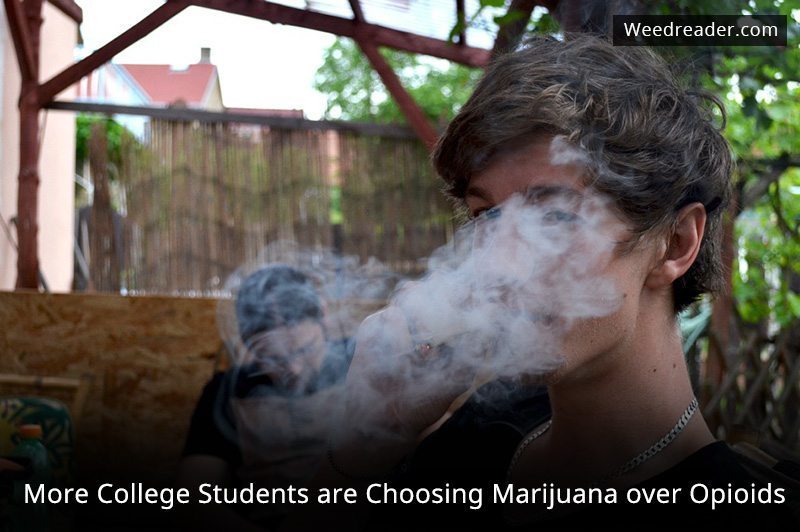The amount of cannabis being consumed by college students is on the rise, while the use of other drugs like amphetamines and opioids is decreasing. Studies have linked decreases in opioid abuse to the availability of marijuana.
The number of college students who admitted to using pot within the last year was at 30 percent in 2006. This number jumped up 8 percent by 2015, according to a study conducted by the University of Michigan Institute for Social Research.
University students who smoked pot daily reached 6 percent in 2014, the highest it has been in 34 years. However, this number dropped below 5 percent in 2015.
HealthDay believe the perception of risk when it comes to marijuana has dropped among college students. According to the same report, the number of young adults between ages 19 and 22 who perceive marijuana to be dangerous fell from 58 percent in 2003 to 33 percent in 2015.
“This increase in use and decrease in perceived risk of harm regarding marijuana use should be taken seriously by college administrators, parents, and students themselves,” said the co-lead researcher of the study, John Schulenberg. “We know through other research that frequent marijuana use can adversely affect academic performance and college completion,” Schulenberg said in a University news release.
On the bright side, students are using less of other drugs. Nonmedical use of prescription opioid drugs in the past year was at 9 percent in 2006. This number dropped to 3 percent in 2015. This includes commonly abused opioids like oxys, vikes, percs, and Fentanyl. Heroin use even declined from .3 percent in 2005 to .1 percent in 2015.
“It appears that college students, at least are hearing and heeding the warnings about the very considerable dangers of using narcotic drugs,” said the principal investigators of the study Lloyd Johnson, a senior research scientist and research professor at the institute.
The “Monitoring the Future” study surveys between 1,000 and 1,500 college students a year. The study also found that K2 or synthetic marijuana use went from 3.5 percent in 2011 to under 2 percent in 2015. This may be due in part to K2’s growing illegal status and marijuana’s increasing legal status.
In 1999, cigarette usage was at 31 percent. In 2015 it was at 11 percent. This is likely due to the increase in popularity of “e-cigarettes” and vaporizers.
Illicit amphetamine use nearly doubled between 2008 and 2012, when it reached 11 percent. However, fewer than one in 10 students said they used amphetamines in 2015, the study found.
“It appears that the increase in nonmedical use of prescription stimulant drugs may have passed its peak, though about one in 10 college students still report using them in the prior 12 months,” Johnston said.
As more and more college students become aware of the fact that marijuana is a less harmful alternative to opioids, the number of pot users will continue to rise as opioid abuse falls.
The only problem is the DEA keeps putting safer alternatives to opioids on the schedule I list of the Controlled Substances Act. The DEA recently decided to leave marijuana on the schedule I list. Kratom, an herbal supplement that people were using to quit opioids will be moved to the schedule I list by the end of this month.





